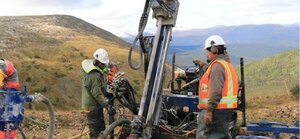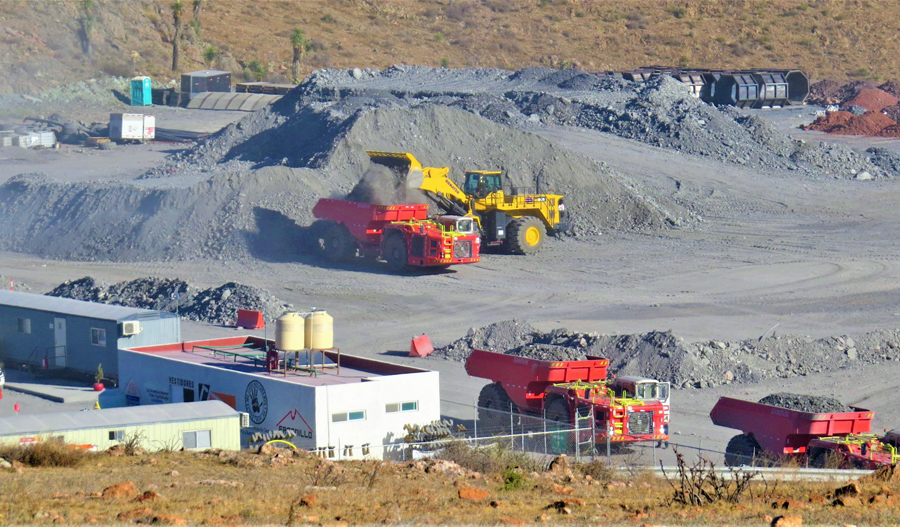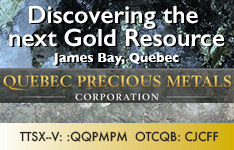When will he pivot? That is the question analysts are debating: how long before the Fed under Jerome Powell caves to deteriorating market and economic news and stops tightening? I have little doubt that we will see the “Powell pivot” before inflation is firmly under control, and even less doubt that the Fed will be unable to bring inflation down without causing serious damage to asset prices and to the economy. I have scant respect for the Fed and its officials. But I have argued that this time around, the Fed will be less concerned with declining asset prices and may stay the course a little longer than most are expecting. Two events this past week reinforce that view.
Two Game Changers Last Week
The strong labor report, showing more jobs created than expected is, in the “good news is bad news” equation, weighing on the stock market. The growth-heavy NASDAQ fell by well over 2% on Friday after the report. The strength in new jobs gives the Federal Reserve over to continue tightening. I have commented before that jobs are the most important indicator for this Fed; they will ignore the stock market and other assets declining (in fact they actually want to see declines in asset prices); they will ignore dollar strength or dollar weakness, manufacturing declines and many other signs of weakness. But a weak jobs market competes with high prices for Fed attention. (A cynic might note the discrepancy between the private ADP jobs report and the government Labor Department report, but we’ll leave that aside for now.)
The Fed will eventually surrender; the question is when.
In another significant development, President Biden and Fed Chairman Jerome Powell met last week, with Biden reportedly telling Powell that bringing inflation down was his number one job. Certainly, inflation is one of the main factors leading many analysts to predict a Democratic wipe-out in the mid-terms. Leaks and spin after the meeting emphasized not only that Biden told Powell bringing down inflation was his main task, but also that Biden respects the independence of the Fed, a not-so-subtle way of emphasizing that inflation is on Powell, not Biden. So given the strength of the labor market; given his marching orders from Biden and the short timeframe before mid-terms, and given the Fed’s deteriorating credibility with even former fed officials, the Fed is likely to continue tightening despite the damage in the stock market and broad economy.
The chief White House economic adviser, Brian Deese, in a press briefing, said the president was acknowledging “the pivotal role that the Fed plays institutionally and that monetary policy plays in the process of bringing prices down.” In other words, it’s his fault, not ours. Expect more of this messaging, which can only add pressure on the Fed to stay the course. By putting the responsibility to lower inflation on the Fed, the White House is also implicitly laying the groundwork to blame the Fed if the economy moves into a recession. Meanwhile, even though charging the Fed with cutting inflation, Biden continues to implement fiat executive orders that boost inflation, but that’s a different story.
Even Now, This Fed Is Hardly Hawkish
I have commented many times that the path on which the Fed has embarked is hardly hawkish. If interest rates continue to increase over the next 12 months at the most aggressive pace discussed by Fed officials, rates will still, a year from now, be deeply negative in real terms (nominal rates less inflation), and lower in even nominal terms than in 2007.
In addition to raising interest rates, the Fed has also started to reduce the size of its balance sheet. To date, a small 5% per month is allowed to roll off—mature without reinvesting the proceeds. The task of actually selling bonds has yet to commence. If the balance sheet is reduced at the most aggressive pace discussed by Fed officials, the balance sheet will still be, a year from now, more than twice what it was two years ago.
This is hardly hawkish. But the Fed continued with its loose policy for far too long and left reversing it too late; hardly anyone reputable disputes that (though of course many of those now saying the Fed left it too late were nowhere to be seen a year ago). Many former Fed officials are criticizing Powell for starting to act too late, but I don’t remember any giving dissenting votes on policy or saying anything at the time.
One member of the Fed’s rate-setting Open Market Committee, Christopher Waller, recently admitted, “If we knew what we know today, we would have acted sooner.” Even former "Fedhead" and now the treasury secretary, Janet Yellen, says she was wrong about inflation. While perhaps honest, these comments raise the question of why the Fed had no clue what was coming.
Powell and the Fed Will Eventually Cave
The Fed will eventually surrender; the question is when. It was already making noises about backing away before this week, with suggestions it might pause tightening in September to see how the economy is responding to its policies. And there have been suggestions that if inflation comes down to 4% that might be sufficient to claim victory. But after this week, that probably changes: if you were the Fed chairman and the president has told you and the world that you are responsible for inflation and for getting it down and that it’s your number one priority—and if commentators were daily suggesting that you don’t have the courage to stay the course—how would you react? You might stiffen the sinews, summon up the blood, and stick with the program a little longer than otherwise.
What makes this current situation so much more dangerous than previous episodes of tightening is the position from which we are starting: years of ultra-low interest rates, a balance sheet more than twice the size the last time the Fed attempted to reduce it, inflation at the highest in 40 years, and massive debt at the government, corporate and household levels.
Reducing the size of the balance sheet, and withdrawing liquidity from the economy is potentially more dangerous if only because the Fed has no experience in handling that. Withdrawing liquidity from an economy (and markets) that have thrived on excess liquidity can only have a damaging impact, not only on asset prices but on the economy.
Already J.P. Morgan CEO Jamie Dimon says “a hurricane is coming,” while Elon Musk is about to lay off staff.
More: Something will break; there are many companies out there alive only because of excess liquidity, companies with no profits but with plenty of debt. How many Lehmans will the Fed be prepared to see this time before reversing course? Or will the administration simply bail out everyone and everything that gets into trouble, thereby aggravating the inflation they say they want to tame?
“Inflation Came Out of the Blue; We Didn’t See It Coming”
The Fed doesn’t seem to know, or won’t admit, the reasons for inflation, namely the excessive money creation of recent years. Instead, we hear about Putin, supply-chain issues, and Shanghai lockdowns. Extraneous factors—such as the sanctions on Russian oil and gas—can cause those prices to go up (though goodness knows that there are other reasons causing higher oil and gas prices). But they do not cause all prices to go up at the same time.
So a drought or a strike or a product recall or any number of circumstances can cause this or that price to go up, but that is not inflation. Given the same amount of money in an economy, a higher price on one good will see a lower price on another. Only when prices in aggregate go up, do we call it inflation (and, as I have explained, that is not actually inflation, but the symptom of inflation); inflation, as Milton Friedman said, “is always and everywhere a monetary phenomenon.”
Ares is a good buy, trading marginally above book and yielding 8.6% excluding small extra dividends (which total of $0.06 this year so far compared with a quarterly dividend of $0.42).
Paul Krugman, the high priest of establishment economists, wrote as recently as June 2021 that inflation was not a risk. That was within one month of the low.
More recently he has said that “the current bout of inflation” came on suddenly because of dislocations from the pandemic. He wrote last year that to think inflation was coming back, “you had to believe either that the Fed’s model of how inflation works is all wrong or that the Fed would lack the political courage to cool off the economy.”
Yes, and yes.
Paul, for once you are correct; you hit the nail on the head.
The Fed's Models Are Wrong
The Fed’s whole methodology is faulty. First, this Fed prides itself on being “data-dependent." It will look at the data and be flexible based on the data, but data show what has already happened. Being “data-dependent” means always being backward-looking. Thus the Fed winds up reacting and being too late. Second, there is a fundamental problem with the models that the Fed (and most modern economists) are using. Fed models are static; they believe you can tweak one input and get a desired change in the outcome. But when there are changes, to interest rates, and to liquidity households and businesses react and change their behavior. So you don’t get the desired outcome. We have seen just in the last couple of weeks many companies, from Tesla to Starbucks, discuss impending labor cuts.
The Fed Has Consistently Got It Wrong
If your models made predictions—on inflation, on GDP, and other economic conditions—that year after year proved incorrect, and frequently wildly inaccurate—as have the Fed’s—would you not perhaps revisit your models (or even start to wonder if the whole business was invalid)? After all, the Fed is the body that sets short-term rates and injects and withdraws liquidity from the economy, so they actually have some influence on the outcome. They have over 400 PhDs in economics working for them.
If even they get it wrong, then it’s time to not tweak the model but revisit the fundamentals. Of course, “even” is the wrong word in the previous sentence. These PhDs and their models have no experience in the real economy. They do not understand how business managers make decisions—on hiring and firing, on expansions and retrenchments—in response to changes in the economy. They do not understand because they have never been in the position of having to make those decisions.
Economists' expectations for inflation have consistently been lower than the reality, every quarter since January 2021. The outlook is for stagflation: continued inflation, even if it settles below current levels, and a recession or stagnant economy. The consumer, particularly the lower-income without large investments in the stock market, is tapped out. The savings rate is now back down to the levels of 2008, while credit card debt saw its largest one-month jump in history. In a stagflation, as we discussed in the last Bulletin, gold, gold, stocks, and oil, followed by smaller market equities, are likely to be the top performers (though oil stocks are short-term overbought while there is no rush yet for smaller market equities).
Which Is It?
The Fed has also been ignorant or disingenuous about its policies. We should remember Fed Head Ben Bernanke’s comments in 2011 that the Fed was not monetizing the debt because that “would involve a permanent increase in the money supply to pay the government's bills through money creation. What we're doing here is a temporary measure that will be reversed, so that at the end of this process, the money supply will be normalized, the Fed's balance sheet will be normalized, and there will be no permanent increase, either in money outstanding or in the Fed's balance sheet.” This is so preposterous that it raises the question whether he actually believed what he was saying.
Here I am reminded of the wonderful words of Mark Twain: “Sometimes I wonder if the world is being run by smart people who are putting us on or by imbeciles who really mean it.”
Yielding 8%, Ares Can Survive a Recession
Ares Capital Corp. (ARCC:NASDAQ) held an “investor day” last week, much of which was concerned with touting the company’s very valid achievements. In particular, over the past three years, in the period covering the COVID shutdowns, Ares has:
• Increased earnings per share by 13%;
• cut non-accruals by 50% to a very low 1.2%;
• see NAV-per-share increase by over 10%;
• raised the quarterly dividend twice in addition to small special dividends;
• deleveraged the balance sheet down to 1.13x debt to assets;
• overall, generated a better-10% annualized total return.
Again, remember this period includes the difficult COVID shutdown period. With a strong balance sheet, low accrual rate, and mostly floating rate loans and fixed-rate debt, Ares is in a strong position to weather rising rates and a slowing economy. Now we must note that over the past year, core earnings only just cover the dividend.
So a decline in activity and the origination fees that come with it, as well as a drop in other non-core income, could see core earnings fall below the dividend, particularly if more companies go on non-accrual. Three full quarters’ worth of undistributed income would help smooth any shortfalls for a period; isn’t this was savings are for? This scenario implies that Ares fails to cover its dividend for a period, but the dividend would remain uncut.
There has been good insider buying recently, including $1 million worth by the company’s president, and $200,000 by a new director. Under $20, Ares is a good buy, trading marginally above book and yielding 8.6% excluding small extra dividends (which total of $0.06 this year so far compared with a quarterly dividend of $0.42).
Buy Ares.
TOP BUYS this week in addition to the above include Osisko Gold Royalties Ltd. (OR:TSX; OR:NYSE); Wheaton Precious Metals Corp. (WPM:TSX; WPM:NYSE); Royal Gold Inc. (RGLD:NASDAQ; RGL:TSX); Barrick Gold Corp. (ABX:TSX; GOLD:NYSE); Altius Minerals Corp. (ALS:TSX.V); Gladstone Investment Corp. (GAIN: NASDAQ); and Lara Exploration Ltd. (LRA:TSX.V).
Questions From Readers
Gold Fields Ltd. (GFI:NYSE; GFI:JSE) just made an offer to buy Yamana Gold Inc. (YRI:TSX; AUY:NYSE; YAU:LSE), at an attractive premium. What are your thoughts?
It is good to see M&A come back to the sector and with attractive premiums (in this case almost 34% on the day of the offer). I do not like, however, the hefty break fees which inhibit a healthy competitive bid which would be to the advantage of shareholders as well as the industry. Nor do I like the all-too-frequent, all-too-exorbitant “change-of-control” bonuses that executives of the target company receive when a bid is successful.
Gold Fields Needs To Replace Reserves, but Few Synergies With Yamana
Back to Gold Fields and Yamana. Gold Fields is a solid company, good operationally, with a strong balance sheet. However, one of its key assets is a deep mine in South Africa, which deserves a discount. Many other of its mines have short lives, and reserve replacement has been a major issue for Gold Fields. Although it has mines in South America, there are few operational synergies with Yamana, and advertised cost savings are very modest. So it is a way for Gold Fields to increase its production and global footprint, and there are increasingly few enough companies available.
Possible Outcomes
As always, since the all-share deal was announced, the acquirer’s share price fell while the target’s increased, but in this case, Gold Fields has declined far more than Yamana has increased. The market does not see a competitive bid coming, partly given the large break fee. I am sure Agnico Eagle Mines Ltd. (AEM:TSX; AEM:NYSE) would like to own the other half of Malartic that Yamana owns—its major asset—and that would be a more logical fit for that asset, but Agnico can’t bid without triggering the break fee and it has other things on its plate right now. Both groups of shareholders must approve the transaction, a 75% “yes” vote in the case of Gold Fields. So it is possible that the deal is voted down by shareholders.
If I owned Gold Fields, I would hold given the sharp decline in the stock price and the likelihood it will retrace some of that lost ground. If I owned Yamana, I would look to be a seller but without a rush. At today’s GFI price ($9.70), the bid is valued at $5.82 in GFI’s shares and Yamana, at 5.68, is not that far away. But of course, GFI’s price has declined, as mentioned, so I would wait for a move up before selling.
Congratulations and "Thank You" to Her Majesty.
We add our congratulations to Her Majesty the Queen of England for her 70 years as monarch, a remarkable life of selfless service. One cannot fail to be impressed with the warmth with which she is held by the British public. I’ll also add that no one does pomp and pageantry like the Brits. And look who came for tea at the palace.
Originally published on June 5, 2022.
Adrian Day, London-born and a graduate of the London School of Economics, is the editor of Adrian Day’s Global Analyst. His latest book is "Investing in Resources: How to Profit from the Outsized Potential and Avoid the Risks."
Want to be the first to know about interesting Gold investment ideas? Sign up to receive the FREE Streetwise Reports' newsletter.
Subscribe
Disclosures
1) Adrian Day: I, or members of my immediate household or family, own securities of the following companies mentioned in this article: Altius Minerals Corp., Barrick Gold Corp., Lara Exploration Ltd., and Osisko Gold Royalties Ltd. I personally am, or members of my immediate household or family are, paid by the following companies mentioned in this article: None. My company has a financial relationship with the following companies mentioned in this article: None. Funds controlled by Adrian Day Asset Management, which is unaffiliated with Adrian Day’s newsletter, hold shares of the following companies mentioned in this article: Altius Minerals Corp., Barrick Gold Corp., Lara Exploration Ltd., and Osisko Gold Royalties Ltd. I determined which companies would be included in this article based on my research and understanding of the sector.
2) The following companies mentioned in this article are billboard sponsors of Streetwise Reports: None. Click here for important disclosures about sponsor fees. The information provided above is for informational purposes only and is not a recommendation to buy or sell any security.
3) Statements and opinions expressed are the opinions of the author and not of Streetwise Reports or its officers. The author is wholly responsible for the validity of the statements. The author was not paid by Streetwise Reports for this article. Streetwise Reports was not paid by the author to publish or syndicate this article. Streetwise Reports requires contributing authors to disclose any shareholdings in, or economic relationships with, companies that they write about. Streetwise Reports relies upon the authors to accurately provide this information and Streetwise Reports has no means of verifying its accuracy.
4) This article does not constitute investment advice. Each reader is encouraged to consult with his or her individual financial professional and any action a reader takes as a result of information presented here is his or her own responsibility. By opening this page, each reader accepts and agrees to Streetwise Reports' terms of use and full legal disclaimer. This article is not a solicitation for investment. Streetwise Reports does not render general or specific investment advice and the information on Streetwise Reports should not be considered a recommendation to buy or sell any security. Streetwise Reports does not endorse or recommend the business, products, services, or securities of any company mentioned on Streetwise Reports.
5) From time to time, Streetwise Reports LLC and its directors, officers, employees, or members of their families, as well as persons interviewed for articles and interviews on the site, may have a long or short position in the securities mentioned. Directors, officers, employees, or members of their immediate families are prohibited from making purchases and/or sales of those securities in the open market or otherwise from the time of the decision to publish an article until three business days after the publication of the article. The foregoing prohibition does not apply to articles that in substance only restate previously published company releases.
Adrian Day's Disclosures
Adrian Day’s Global Analyst is distributed for $990 per year by Investment Consultants International, Ltd., P.O. Box 6644, Annapolis, MD 21401. (410) 224-8885. Publisher: Adrian Day. Owner: Investment Consultants International, Ltd. Staff may have positions in securities discussed herein. Adrian Day is also President of Global Strategic Management (GSM), a registered investment advisor, and a separate company from this service. In his capacity as GSM president, Adrian Day may be buying or selling for clients securities recommended herein concurrently, before or after recommendations herein, and may be acting for clients in a manner contrary to recommendations herein. This is not a solicitation for GSM. Views herein are the editor’s opinion and not fact. All information is believed to be correct, but its accuracy cannot be guaranteed. The owner and editor are not responsible for errors and omissions. © 2022. Adrian Day’s Global Analyst. Information and advice herein are intended purely for the subscriber’s own account. Under no circumstances may any part of a Global Analyst e-mail be copied or distributed without prior written permission of the editor. Given the nature of this service, we will pursue any violations aggressively.



















































